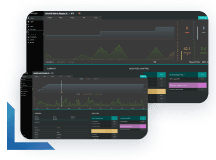
Ticketmaster: An object lesson on the need for performance engineering
Growing a business requires more than just models & apps; user experience matters. Great digital performance is crucial for competitive advantage.
The user experience is critical – just ask Ticketmaster.
Growing a business isn’t just about business models, services, and applications; it’s equally about the user experience. Customers have grown used to the Amazon shopping experience and now expect the same level of ease and convenience from any brand. One in six shoppers will walk away from a purchase when they’re having a poor customer experience. More ominously, poor CX caused 53% of U.S. consumers to walk away from not just the purchase, but the brand to which they had been loyal in the previous 12 months. A poor user experience risks more than a sale; it can damage the relationship a brand has with its customers and adversely impact brand perception, referrals, and ultimately revenue.
Excellent digital performance has become a do-or-die competitive differentiator, nearly as important as product quality. Recent data shows that improving your digital experience directly impacts your bottom line. According to the International Data Corporation’s (IDC) Future Enterprise Resilience and Spending survey, 34% of respondents experienced improved profit margins by investing in the digital experience.
Without performance engineering, it’s impossible to truly measure and improve a customer experience. Response speed is an important aspect for customers, but we mustn’t forget usability. It’s much harder to measure, but just as frustrating if the application doesn’t work. Investing in performance technology like Tricentis NeoLoad means that you can address both responsiveness and usability. And organizations who routinely deliver great CX know this; 79% of respondents in the IDC study reported that technology is critical to CX delivery.
The impact of external factors in performance engineering
Unfortunately, it’s difficult to deliver on exceptional user experiences because there are so many variables in play. Applications are constantly evolving in complexity, with more and more moving parts. What’s more, there’s a greater focus on speed and delight in the post-pandemic world. To compete in this environment, businesses must prioritize performance engineering. Understanding one’s competitive market means anticipating user scenarios and testing them, along with properly tuning the application to the infrastructure it functions within.
Many organizations are moving to the cloud or to cloud-based apps, which makes it more challenging to create a great user experience. Many leaders think that moving to the cloud means making their applications more scalable, but that’s not true. Cloud providers only manage infrastructure; they don’t monitor service level agreements, speed, or performance. If an app is poorly written, it will perform slowly. Other factors that impact performance can include app components and databases, third-party API calls, configuration settings, tagging, JavaScript, and more.
Regardless of back-end complexity, the user experience comes together in the browser on your desktop or mobile device. This, more than any other reason, is why we emphasize performance engineering. To ensure a great customer experience, we need to measure performance at the browser level. With a performance testing tool like NeoLoad, we can get a holistic view of the user’s experience in a simulated environment that we dictate.
NeoLoad simplifies and scales performance testing for everything, from APIs and microservices to end-to-end application testing through innovative protocol and browser-based capabilities. It works by testing for performance issues early in the development process at the API level to find issues when they are easy to fix. It also works by hitting the full application with a high load in an end-to-end testing environment that simulates what the end user will experience. By replicating user scenarios, we can see how certain behaviors affect the performance of the application. Ultimately, we can optimize the end user experience based on simulated performance.
Understanding the market and anticipating user scenarios
To properly anticipate problems, it’s critical to understand the market we’re competing in. By collecting and analyzing customer data, we can understand customer needs and their expectations. With that understanding we can tune our app to work well under hypothetical conditions. Without that understanding, all the planning in the world can still result in a poor user experience.
Ticketmaster isn’t the only organization to feel the effects of poor performance engineering and misunderstanding one’s market. Intuit’s TurboTax also notably missed the boat some years back. While Intuit engineers planned for an increase in electronic tax filings, they failed to fully understand e-filing’s appeal to their customers. Planning for growth did not help them when seemingly everyone decided to e-file, overpowering the app with more than twice the number of anticipated users. As a result, the government had no choice but to extend the federal tax filing deadline as a result of this failure. Proper performance engineering includes load testing, and had TurboTax understood their market they would have anticipated their customer behavior and conducted performance testing for a much higher load.
Approached properly, performance engineering ensures that apps that perform well in every anticipated scenario. Consider Abercrombie & Fitch, a leading clothing retailer in the U.S. As with many retailers, the holidays represent peak selling season. This was even more true in 2020, when the pandemic forced a massive increase in online shopping. Many retailers were caught off guard during that holiday season, but Abercrombie had already spent years focusing on performance engineering and performance test automation. Well before the pandemic, the company’s holiday readiness team simulated tens of thousands of orders per hour, automated script maintenance, and eliminated manually coded tests. As a result, in 2020 the company realized its best digital sales performance in over a decade — in a year when many of their less-prepared competitors were caught unprepared.


